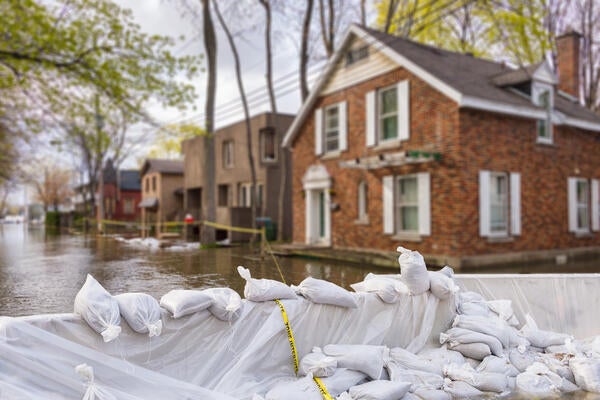
Will your community survive climate change?
Waterloo planning professor asks ordinary people for input on protecting Tobago from chaotic weather changes

Waterloo planning professor asks ordinary people for input on protecting Tobago from chaotic weather changes
By Sam Toman Faculty of Environment
Luna Khirfan travelled with students to the island of Tobago and did something radical: She asked ordinary people for their ideas about protecting mangrove forests and wetland habitats in the face of climate change.
“You have people who are over-researched, so they are tired of foreigners coming in and trying to ‘do this, do that,” says Khirfan, an associate professor in Waterloo’s School of Planning. “They enjoyed the process because we were not talking, we were sitting and listening to them, so they felt empowered.”
Khirfan and a select group of Environment students in the School of Planning, are working to design cities that can better adapt to chaotic weather changes due to climate change.
While in Tobago, her students recruited volunteers by walking through the streets and asking people from all walks of life if they would participate in a design project and share their knowledge of everyday climate-related challenges.
Rising ocean levels and fragile food supply
Places like Tobago, are especially at risk to shifts in climate due to rising ocean levels, economic reliance on tourism, and a fragile food supply.
The research Khirfan is doing with her students is part of the Partnership for Canada-Caribbean Community Climate Change Adaptation (ParCA), a research project led by Daniel Scott, the University of Waterloo’s Canada Research Chair in Global Change and Tourism.
Initially, ParCA hoped to investigate how innovative community design could help Tobagonians adapt to their changing climate. But when Scott saw the impressive work Khirfan’s classes had been doing with urban spaces and community gardens in Canada, he recruited her to assemble a student research team to travel to the Caribbean to gather information at the community level, and begin to design solutions.
What Scott saw, and what makes Khirfan’s research approach so effective, is her commitment to incorporate input from every day people into resilient design.
The information they received was invaluable. “We were told by a lot of ordinary people that the rainy season is becoming too wet and the dry season is becoming too dry,” says Khirfan. This imbalance affects both potable water supplies and food growing capacity. Residents were also concerned about the region becoming too hot and the repercussions on bio-diversity.
“An integrated design approach,” Khirfan says, “where a combination of design interventions at various urban scales help to increase the local communities’ resilience to climate change.” Some of these interventions build on the eco-system’s aptitudes such as protecting and expanding the mangrove forests and their wetland habitats by channeling rainwater to them. Other interventions seek to modify building practices.
“Roof gardens,” Khirfan says “capture and harvest rain water, and at the same time insulate the house. You can combine that with a wind catchment system, solar energy and grey water management.”

Read more
Waterloo researchers propose solution to help communities escape the costly cycle of flood damage and rebuilding

Read more
Tennis Canada partners with Waterloo researchers to reach their goal of a net-zero and waste-free event by 2030

Read more
The Future Cities Institute joins forces with BestWR to help measure the region’s readiness for growth
The University of Waterloo acknowledges that much of our work takes place on the traditional territory of the Neutral, Anishinaabeg, and Haudenosaunee peoples. Our main campus is situated on the Haldimand Tract, the land granted to the Six Nations that includes six miles on each side of the Grand River. Our active work toward reconciliation takes place across our campuses through research, learning, teaching, and community building, and is co-ordinated within the Office of Indigenous Relations.